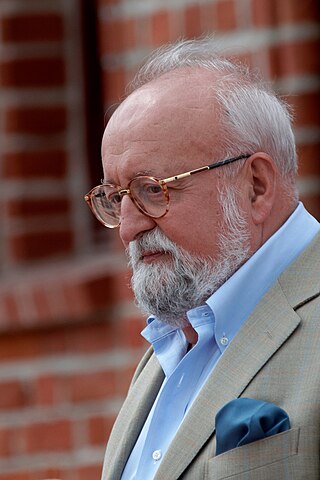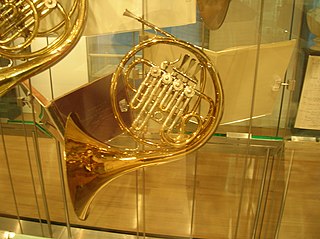
Japanese Festival Music, Op. 84 (1940), is a composition by Richard Strauss. The full title is Festmusik zur Feier des 2600jährigen Bestehens des Kaiserreichs Japan für großes Orchester (Japanische Festmusik).

Japanese Festival Music, Op. 84 (1940), is a composition by Richard Strauss. The full title is Festmusik zur Feier des 2600jährigen Bestehens des Kaiserreichs Japan für großes Orchester (Japanische Festmusik).
The Japanese government commissioned music from composers of six nations to mark the 2600th anniversary of the Japanese Empire. Other composers writing for the festivities included:
Japan's request for a composition from an American composer was turned down due to the deterioration of relations between the countries.
Joseph Goebbels assigned the Japanese commission to Germany's most prominent composer, Richard Strauss. Strauss, age 75, put aside composition on his opera Die Liebe der Danae to work on Japanese Festival Music while staying in the Italian Tyrol. He completed the work on April 22, 1940 and received 10,000 Reichsmarks for his effort.
Japanese Festival Music is written for a large orchestra 3 Flutes (piccolo), 2 oboes, English Horn, 4 clarinets, bass clarinet, 3 bassoons, contrabassoon, 8 French horns, 4 trumpets, 4 trombones, 2 Tubas, 14 tuned temple gongs, timpani, bass drum, cymbals, triangle, tam-tam, snare drum, tambourine, glockenspiel, two harps and strings. There is also an option for either an organ or an additional 3 trumpets, 4 trombones and 2 French horns.
There are five sections:
The première was at the Kabukiza Theatre, Tokyo on December 14, 1940. Helmut Fellmer, a music professor in Tokyo at the time, conducted the NHK Symphony Orchestra (augmented to 165 musicians for this occasion and called The Symphony Orchestra in Celebration of the 2600th Anniversary of the Japanese Imperial Dynasty). The audience for this occasion also heard the other three commemorative works. Fellmer conducted this orchestra again on December 19, 1940 for a recording on Nippon Columbia. The first European performance was in Stuttgart on October 27, 1941 with Hermann Albert conducting.
Japanese Festival Music is probably Richard Strauss's least programmed work and is often described as one of his weakest compositions. Norman Del Mar compared it to the Festliches Präludium (Festive Prelude for Orchestra and Organ) in which “a vast orchestra piles one towering climax upon another”. Strauss conducted the work for recording in late 1940 with the Bavarian State Opera Orchestra (possibly he recorded it before the Tokyo premiere); this recording was issued on CD in 1990 by Deutsche Grammophon in a 3-CD set of Strauss conducting his own works (catalogue number 429 925-2 GDO3), and four years later on Preiser 90205. The duration of the work is approximately fourteen minutes. The score was published by Oertel in Berlin in 1941 (on the cover is a crest of the chrysanthemum against a red background) and is obtainable from Boosey & Hawkes.

Richard Georg Strauss was a German composer and conductor best known for his tone poems and operas. Considered a leading composer of the late Romantic and early modern eras, he has been described as a successor of Richard Wagner and Franz Liszt. Along with Gustav Mahler, he represents the late flowering of German Romanticism, in which pioneering subtleties of orchestration are combined with an advanced harmonic style.

Boléro is a 1928 work for large orchestra by French composer Maurice Ravel. At least one observer has called it Ravel's most famous composition. It was also one of his last completed works before illness forced him into retirement.
The Symphony No. 11 in G minor, Op. 103, by Dmitri Shostakovich was written in 1957 and premiered by the USSR Symphony Orchestra under Natan Rakhlin on 30 October 1957. The subtitle of the symphony refers to the events of the Russian Revolution of 1905, which the symphony depicts. The first performance given outside the Soviet Union took place in London's Royal Festival Hall on 22 January 1958 when Sir Malcolm Sargent conducted the BBC Symphony Orchestra. The United States premiere was performed by Leopold Stokowski conducting the Houston Symphony on 7 April 1958. The symphony was conceived as a popular piece and proved an instant success in Russia, his greatest one since the Leningrad Symphony fifteen years earlier. The work's popular success, as well as its earning him a Lenin Prize in April 1958, marked the composer's formal rehabilitation from the Zhdanov Doctrine of 1948.
Gordon Percival Septimus Jacob CBE was an English composer and teacher. He was a professor at the Royal College of Music in London from 1924 until his retirement in 1966, and published four books and many articles about music. As a composer he was prolific: the list of his works totals more than 700, mostly compositions of his own, but a substantial minority of orchestrations and arrangements of other composers' works. Those whose music he orchestrated range from William Byrd to Edward Elgar to Noël Coward.

Radovan Vlatković is a Croatian-born horn player. He was the former principal horn of the Berlin Radio Symphony Orchestra. He left that post in 1990 to devote himself to a solo career and has recorded many of the major works for horn. He is now professor of horn at the Mozarteum in Salzburg, Austria and at the Reina Sofía School of Music in Madrid. Vlatković also participates as a senior artist at the Marlboro Music Festival, and has performed in chamber music and solo recital for the Philadelphia Chamber Music Society.

Hisato Ohzawa, known in Japan as Hisato Ōsawa, was a Japanese composer. Renewed interest in his work reflects the view that he was one of the preeminent Japanese composers of his day.

Ein Heldenleben, Op. 40, is a tone poem by Richard Strauss. The work was completed in 1898. It was his eighth work in the genre, and exceeded any of its predecessors in its orchestral demands. Generally agreed to be autobiographical in nature despite contradictory statements on the matter by the composer, the work contains more than thirty quotations from Strauss's earlier works, including Also sprach Zarathustra, Till Eulenspiegel, Don Quixote, Don Juan, and Death and Transfiguration.
Sinfonia da Requiem, Op. 20, for orchestra is a symphony written by Benjamin Britten in 1940 at the age of 26. It was one of several works commissioned from different composers by the Japanese government to mark Emperor Jimmu's 2600th anniversary of the founding of the Japanese Empire. The Japanese government rejected the Sinfonia for its use of Latin titles from the Catholic Requiem for its three movements and for its somber overall character, but it was received positively at its world premiere in New York on 29 March 1941 under John Barbirolli. A performance in Boston under Serge Koussevitzky led to the commission of the opera Peter Grimes from the Koussevitzky Music Foundations.
Matthew Taylor is an English composer and conductor.
The Symphony No. 2 in D-flat major, Opus 30, W45, "Romantic", was written by Howard Hanson on commission from Serge Koussevitzky for the 50th anniversary of the Boston Symphony Orchestra in 1930, and published by Carl Fischer Music.
The Symphony in B minor "Polonia", Op. 24, was written by Ignacy Jan Paderewski between 1903 and 1908, and first publicly performed in 1909. Although he lived for another 32 years, the symphony was virtually Paderewski's last composition; he wrote only one more work before his death in 1941 - a hymn for male chorus in 1917. Around 1910, he commenced what would become a political career, culminating in becoming the first Prime Minister of independent Poland and signing the Treaty of Versailles on behalf of his nation in 1919. He later returned to the concert platform as a virtuoso pianist.
The Symphony No. 3, H. 299, is an orchestral composition by the Czech composer Bohuslav Martinů.

The Symphony No. 1 by Polish composer Krzysztof Penderecki was composed in 1973. It was published by Polish Music Publishing House and Schott Music and has never been expanded or revised.
Envoi is a single-movement orchestral composition by the American composer Christopher Rouse. The work was commissioned by the Atlanta Symphony Orchestra with additional contributions from Thurmond Smithgall. It was first performed May 9, 1996 in Atlanta Symphony Hall, Atlanta by the Atlanta Symphony Orchestra under conductor Yoel Levi. The piece is dedicated to Rouse's mother, who died in the summer of 1993.
The Symphony No. 3 is the third symphony by the Scottish composer James MacMillan. The piece was first performed on April 17, 2003 in NHK Hall, Tokyo, by the NHK Symphony Orchestra under the conductor Charles Dutoit.
A Symphony of Three Orchestras is an orchestra composition by the American composer Elliott Carter. The work was commissioned by the New York Philharmonic through a grant from the National Endowment for the Arts. It was composed from June through December 1976 and was first performed in New York City on February 17, 1977 by the New York Philharmonic under the conductor Pierre Boulez. The composition is dedicated to Boulez and the New York Philharmonic.

Symphony No. 4, "A Vitória" (Victory) is a composition by the Brazilian composer Heitor Villa-Lobos, written in 1919. A recording conducted by the composer lasts just over thirty minutes.

Symphony No. 11 is a composition by the Brazilian composer Heitor Villa-Lobos, written in 1955. A performance lasts about twenty-five minutes.
Symphony No. 3 (1938) is a symphony in four movements composed by American composer Howard Hanson (1896–1981). The first three movements were finished in 1936, a revision in 1938 added the finale movement to the symphony. A typical performance time is approximately 36 minutes. The work, commissioned by the CBS Symphony Orchestra, was written in commemoration of the 300th anniversary of the first Swedish settlement in Delaware in 1638.

Richard Strauss composed his Horn Concerto No. 2 in E-flat major, whilst living in Vienna in 1942. The work was premiered in 1943 at the Salzburg Festival and was recorded in 1944, both with solo horn Gottfried von Freiberg. The score was published by Boosey & Hawkes of London in 1950. It was taken up and popularised by the British horn player Dennis Brain. It has since become the most performed and recorded horn concerto of the 20th century.